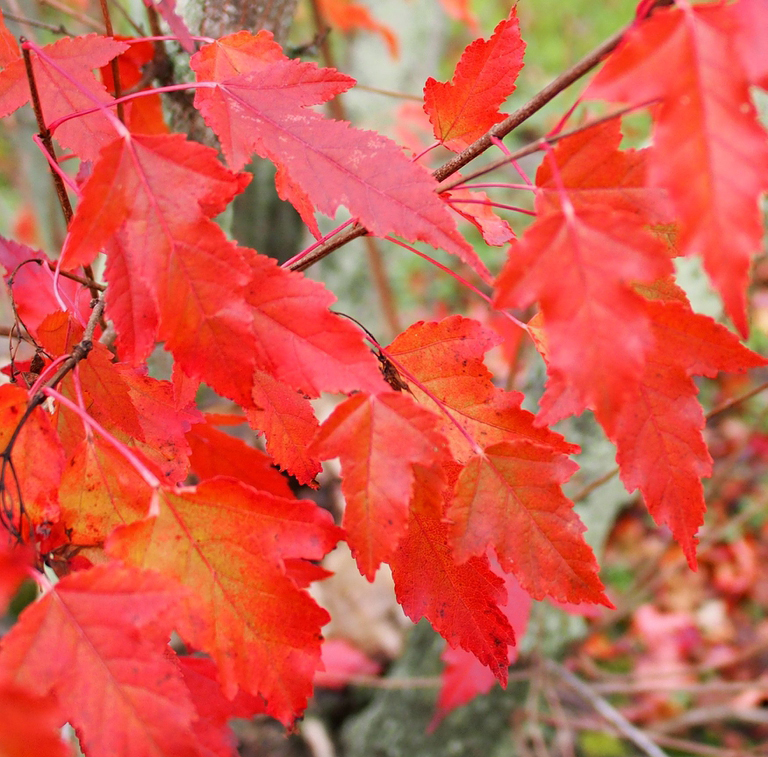
Amur Maple Can Be a Problem Solver
Marjorie and I were touring the Spring Grove Cemetery on a hot, dry August afternoon a few years ago, when we happened to spot a spectacular crabapple tree in full bloom. At least it looked like a crabapple. Covered with bright fire-engine red flowers, it stood in the middle of a field looking fresh as a daisy in the midst of a three-month drought. It was medium-sized, about fifteen feet tall and wide with multiple trunks in a classic vase-shaped “clump form”.
Turns out it was an Amur maple (acer ginnala), a large shrub or small tree native to northeast Asia. It is named for the Amur River, the tenth-longest river in the world, the river that forms part of the border between Russia and China.
Amur maple is an interesting low-growing tree that can be grown as a multi-stemmed clump or can be trained into a single trunk. It grows 20 to 30 feet tall and has a rounded, finely branched growth habit that creates dense shade. Amur maple can grow rapidly when it is young if it receives water and fertilizer, but it is perfect for planting underneath power lines since it slows down and remains small at maturity. It is very drought-tolerant, which is why the one we saw at Spring Grove was such a standout in the summer heat.
We were so impressed with it that we planted a small grove of Amur Maples, as a privacy screen. The trees grew rapidly and soon formed a continuous canopy that gave us shade, privacy and windbreak. Left alone, Amur maples form large bushy shrubs, so I had to prune the lower limbs and suckers off in order to walk or mow under them. “Limbing up” the amur maple grove became a ritual for several years, until the trees made enough shade to limit sucker growth along the trunks.
Those of you who attended our ritual Mother’s Day party at GoodSeed Farm might remember sitting under them enjoying the concession food. In spring they bloom heavily, giving off a powerful perfume similar to old-fashioned lilacs. In fall the leaves turn brilliant orange-red.
Every tree has an ideal spot and a purpose; a solution to a problem. Over the years we’ve planted Amur maples in customer landscapes; for fast-growing shade over a water feature, for privacy screening along property lines, and in locations where taller maples would interfere with overhead wires. Over the years they have rewarded us with lovely fragrance in spring, vivid red seed heads in summer, and terrific fall color. Amur maples are tough and adaptable in poor soils and drought. They are a great example of how nature offers us just the right tree for every situation, if we have an open mind.
Steve Boehme is a landscape designer/installer specializing in landscape “makeovers”. “Let’s Grow” is published weekly; column archives are on the “Garden Advice” page atwww.goodseedfarm.com. For more information is available atwww.goodseedfarm.comor call GoodSeed Farm Landscapes at (937) 587-7021.

